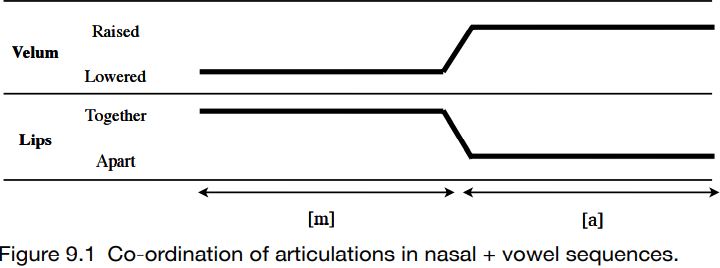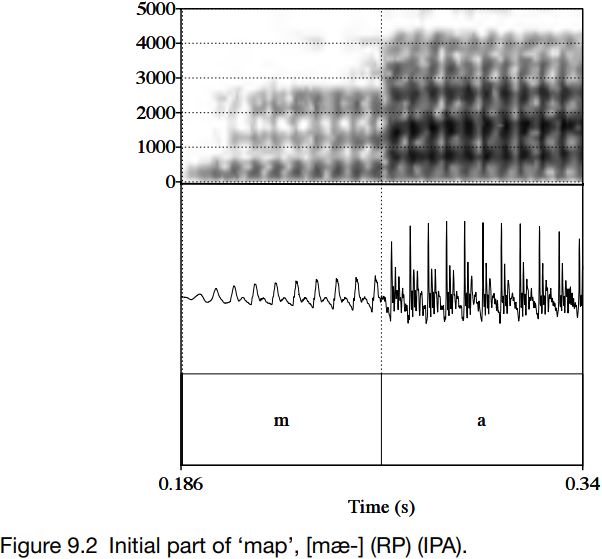


 Grammar
Grammar
 Tenses
Tenses
 Present
Present
 Past
Past
 Future
Future
 Parts Of Speech
Parts Of Speech
 Nouns
Nouns
 Verbs
Verbs
 Adverbs
Adverbs
 Adjectives
Adjectives
 Pronouns
Pronouns
 Pre Position
Pre Position
 Preposition by function
Preposition by function 
 Preposition by construction
Preposition by construction
 Conjunctions
Conjunctions
 Interjections
Interjections
 Grammar Rules
Grammar Rules
 Linguistics
Linguistics
 Semantics
Semantics
 Pragmatics
Pragmatics
 Reading Comprehension
Reading Comprehension|
Read More
Date: 2023-09-27
Date: 2023-11-04
Date: 2023-09-01
|
In coming out of a nasal into a vowel, the oral closure must be released, and the velum must be raised to block airflow through the nasal cavity. These two articulations are generally simultaneous, so that when the oral closure is released, the airflow becomes oral. This produces a discontinuity in volume, which can be seen in waveforms and spectrograms as a rapid change in amplitude. Sometimes, movements of the velum can be seen in a spectrogram.

Figure 9.1 gives a schematic representation of a nasal followed by a vowel. The upper line represents the action of the velum, and the lower line represents the action of the lips; the two articulations are temporally aligned so that they co-occur. The transition in time from [m] to [a] is quite fast (a few tens of milliseconds).
Figure 9.2 gives a spectrogram and a waveform of the start of the word ‘map’, as produced by a male speaker of RP. The nasal and vowel portions are marked [m] and [a] respectively: notice the rather abrupt change in amplitude as the nasality ends.

What can also be seen is that during the spectrogram of the portion labelled [m], there are some areas of low amplitude, such as around 1600 Hz. This is because the nasal cavities absorb some of the acoustic energy, and gaps like this (called zeroes) are often evident on spectrograms. Although there are formants visible during the nasal portion, they are less distinct than in the vocalic portion; this is because the formant peaks are wider, which makes them also quieter and less visually prominent. This is particularly noticeable for F1.
|
|
|
|
علامات بسيطة في جسدك قد تنذر بمرض "قاتل"
|
|
|
|
|
|
|
أول صور ثلاثية الأبعاد للغدة الزعترية البشرية
|
|
|
|
|
|
|
مدرسة دار العلم.. صرح علميّ متميز في كربلاء لنشر علوم أهل البيت (عليهم السلام)
|
|
|